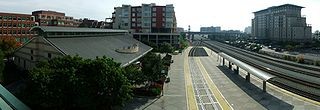An industrious organization known as Aclima (with the help of Google), is taking air-pollution measuring to the streets, literally; to the next level, if you will.
But, why the need to mobile monitor?
As Aclima explains, “Today Aclima’s mobile air quality measurement technology creates the opportunity to provide air pollution data to regions lacking measurement, providing access to information that has a large influence on our health. …”
So, why is this important and what does mobile air-pollutant measuring do that stationary-based monitoring doesn’t?
“[M]obile measurements can provide a hyperlocal layer of environment intelligence in regions that have established air quality monitoring, highlighting areas of concern at the street-level,” Aclima in the press release: “Aclima Launches Insights from California Air Quality Measurement and Mapping Project with Google,” continued.
But, what does such so-called “pinpoint” measuring really tell us?
It really all boils down to three things: 1) bringing about better as well as increased awareness of local air quality matters; 2) identifying resolutions to help lessen exposure to harmful pollutants as well as in mitigating said pollutants; and 3) making choices that are better at protecting personal health and promoting physical well-being.
And, how can this approach work where maybe a traditional method might not have?

Aclima submits: “As we begin to share this data with city, regional, and state decision-makers, we expect that this new layer of environmental intelligence can increase our understanding of how transportation, infrastructure, and urban planning impact air quality – from the street level to the city scape.”
That, more or less, is a highly simplistic declaration. Aclima expands upon this by further relating: “The hyperlocal air quality data made possible by our mobile platform will transform the way we make decisions about when to go for a run, which route we take to work, or how to prevent exposure to harmful air pollutants.”
Methodology

“Over the course of 100,000 miles and 4,000 hours of driving from 2015 through 2017, we captured California’s air pollution with hyperlocal detail in three important regions – the San Francisco Bay Area, Los Angeles, and California’s Central Valley,” Aclima further stated. “Crisscrossing a city’s busiest arteries, intersections, and neighborhood streets enables us to see how levels of pollution change throughout a city over the course of a day, weeks, and months.”
According to Aclima, two Google Street View vehicles were outfitted with said “mobile platform,” a system that “includes data management, quality control, and visualization functions that enable the type of extensive routine air pollution data collection we performed in California.” Driving/measuring was restricted to between the hours of 9 a.m. and 5 p.m. Mondays through Fridays, while pollutants measured were black carbon (BC), methane (CH4), nitric oxide (NO), nitrogen dioxide (NO2), ozone (O3) and fine particulate matter (PM 2.5).
From measurements taken and data collected the environmental concern was able to assemble the largest set of data of its kind concerning emissions that affect public health the most – to be specific, over a billion data points in all – all as it has to do with air quality measuring at the hyperlocal level.
About California
California as America’s most populated state possesses some of this country’s dirtiest air. With a population of 39 million people and growing and with driving on the increase, fossil-fuel combusted emissions are sure to grow also. The bulk of harmful pollutant emissions generated are from agricultural, commercial, energy, industrial, residential and transportation-sources sectors.

Middle image above: NASA
This post was last revised on Dec. 9, 2020 at 6:31 a.m. Pacific Standard Time.
Published by Alan Kandel